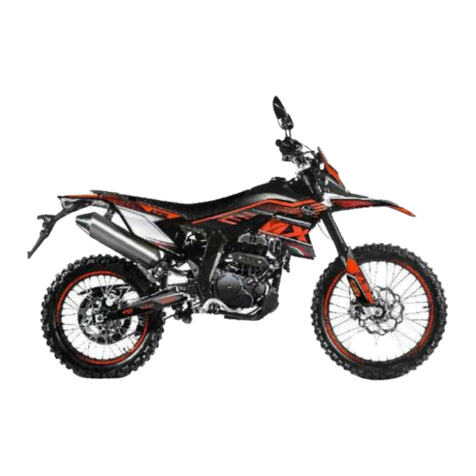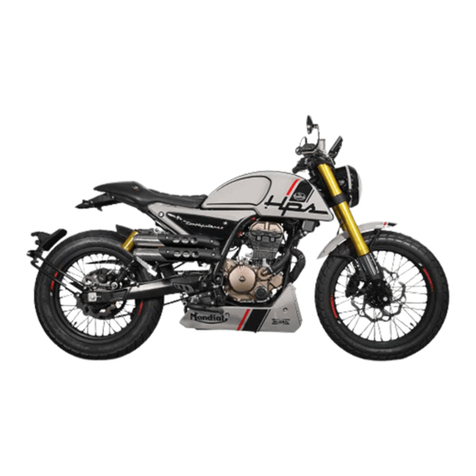1General rules
Foreword
NOTE
Carry out maintenance operations at half the intervals specified if the vehicle is used rainy or dust conditions, off road or
for track use.
Motorcycle care
PELPI recommends using quality products to clean the vehicle. The use of unsuitable products can damage vehicle components.
For cleaning do not use solvents such as” nitro thinner” or” cold cleaning agents”, fuels or similar, or cleaning products that contain
alcohol.
Before cleaning
•Close off the exhaust system to avoid water from entering
•Make sure that all caps and covers as well as electrical couplers and connectors, including the spark plug(s) are properly
tightly installed.
•First, remove coarse dirt particles with a gentle spray of water. Spray very dirty areas with a normal motorcycle cleaner
and then clean with a brush.
Washing the motorcycle
PELPI recommends softening with plenty of water and then, remove carefully the insects and more stubborn stains before washing
the vehicle. To prevent stains, do not wash the motorcycle immediately after exposure to sunlight. Do not wash it in the sun.
If the vehicle is used during the winter time, be sure to frequently wash the motorcycle. To remove anti-icing salt sprayed on roads
in the winter, wash the motorcycle with chilly water immediately after use.
CAUTION
After cleaning your motorcycle, the efficiency of the braking system may be temporarily affected due to the presence of
water on the friction surfaces. You must consider an increase in braking space, operate the brakes repeatedly to restore
normal conditions. Carry out the pre-ride checks before use.
Use of hot water intensifies the effect of the salt. Use only plenty of chilly water to wash and remove anti-icing salt.
Use of high pressure washing systems (or steam cleaners) can damage the seals, oil seals, braking system,
electrical system and seat. Do not use steam or high-pressure cleaning systems.































